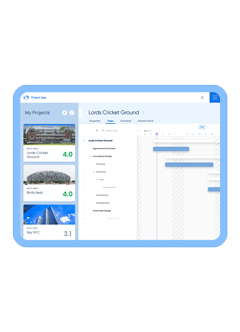Ben Franklin’s proverbial words “time is money” have special meaning for design consultancies, as successful delivery of professional services involves navigating the intersection of project schedules and project finances.
Earned Value Management (EVM) provides direction at this intersection by offering a variety of metrics to assess project health and drive project performance. Let’s build on EVM’s three basic metrics and explore nine financial and scheduling metrics that your consultancy can leverage today.
Financial Metrics
1. Budget Variance
As the difference between Earned Revenue and Actual Effort on a project, this metric compares how much money has been spent to how much revenue has been earned and provides insight into whether the project is under-budget (positive value) or over-budget (negative value).
2. Effort Performance Index
This ratio of Earned Revenue to Actual Effort measures how efficiently a project is earning revenue compared to expenditure. An index less than one indicates an over-budget condition.
3. Effort at Completion
Dividing Planned Revenue by the Effort Performance Index provides a projection of how much money will be spent at project completion.
4. Budget Variance at Completion
The difference between Planned Revenue and Effort at Completion projects where a project will end up in comparison to its overall budget.
Scheduling Metrics
5. Schedule Variance
The number of time periods (e.g. days, weeks, or months) between the current time period and when Planned Revenue matches the current Earned Value position, this offers an assessment of whether a project is ahead of schedule (i.e. Earned Value ahead of Planned Value) or behind schedule.
6. Schedule Performance Index
The ratio of Earned Revenue at a point in time to the Planned Revenue at the same point provides a normalized assessment of whether a project is ahead of schedule (greater than one) or behind (less than one).
7. Planned Duration
This metric indicates the number of time periods a project is expected to span.
8. Duration at Completion
Dividing the Planned Duration by the Schedule Performance Index will give you a projection of how many time periods will have elapsed at project completion.
9. Schedule Variance at Completion
The difference between Duration at Completion and Planned Duration, this is a projection of whether the project will complete ahead or behind schedule.
Closing Thoughts
Different consultancies have different needs, including which combination of financial and/or schedule metrics are useful. As you identify the mix of metrics for your firm, consider goals and variance thresholds for each selected metric.
For example, if Effort Performance Index is important, define the upper and lower limits that dictate whether a project needs further focus and attention. By defining these thresholds, you can start to establish how EVM will fit into your firm’s project management methodology.
In my next post, I’ll share tips on harnessing the metrics outlined above, in conjunction with process and technology, to implement EVM in a design consultancy.
Author’s Note: This is the third article in a four-post series on the use of Earned Value Management in professional services organizations.









